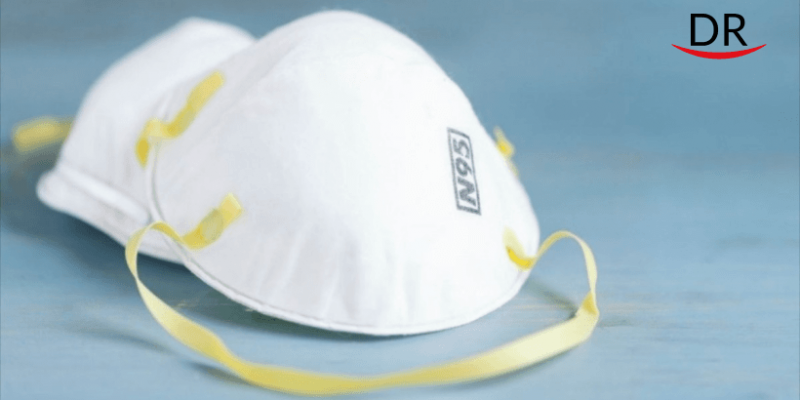As we prepare to return to our practices, it is essential to know about different types of masks and respirator options available and the degree of protection provided by them.
The current situation is fluid and may change rapidly but it is important to understand what protection is currently available before we start providing services to our patients.
Masks
Particles that are smaller than 50 microns in diameter are known as aerosols. Smaller particles of an aerosol that are 5-10 microns can penetrate and lodge in smaller passages of lungs, causing an infection.
Even before COVID-19, dentists have been using Personal Protective Equipments (PPE) including many different types of masks from time to time to protect against various bacteria and viruses that might be present in the aerosol generated during dental procedures.
High aerosol generating procedures like ultrasonic scaling, crown preps, oral surgery procedures and periodontal surgeries are known to produce aerosols that can linger in an operatory for between 10 to 30 minutes. Thus, each dental procedure has different levels of risk associated with it.
All masks are not the same and the selection of masks should be made on the basis of design, fit and level of filtration needed for a particular procedure. All medical masks carry a classification from the American Society of Testing and Materials (ATSM)
ATSM Performance Criteria for Grading Masks
Bacterial Filtration Efficiency (BFP)
- Measures the percentage of bacteria filtered when challenged with a bacteria-containing aerosol
- ASTM tests with a droplet size of 3 microns containing Staphylococcus aureus (.6–.8 microns)
- In order to receive medical/surgical grade mask, a minimum of 95% filtration is required
- Moderate or high protection masks must have a bacterial filtration rate of 98% or greater
Particulate Filtration Efficiency (PFE)
- Measures the percentage of sub-micron particles that will be filtered
- The higher the percentage, the better the filtration
- ASTM F2100-11 specifies the use of a particle size of .1 micron
Fluid Resistance
- Measures the mask’s ability to minimise the amount of fluid that can transfer from the outer layer to inner layer from a splash or spray
- ASTM tests with synthetic blood at pressures of 80, 120, or 160 mm Hg to qualify for low, medium, or high fluid resistance
Differential Pressure (Delta P)
- Measures the air flow resistance of the medical mask
- An objective measure of breathability
- ASTM requires a Delta P of less than 5.0 for moderate or high barrier masks
- The greater the resistance equals better filtration, yet less breathability
Flame Spread
- Measures ability to withstand exposure to a burning flame for three seconds
Surgical Masks vs Procedural Masks
Surgical masks are designed for use in an operating room or similar sterile area to protect the patient and environment from possible contamination. They have ties that allow adjustment for fit over surgical caps.
Procedural masks are designed for use when performing patient procedures or when a patient is in isolation to protect the patient from contaminants. They have ear loops rather than ties.
Respirators
A respirator is a specific type mask that is designed to reduce the wearer’s risk of inhaling hazardous airborne particles such as dust particles or infectious agents, including gas or vapors. It may cover the entire head, or it may cover the nose and mouth.
The National Institute for Occupational Safety and Health (NIOSH) has classified respirators as follows:
Respirators rated for protection against oils
- N (not resistant),
- R (somewhat resistant), and
- P (strongly resistant).
Respirators rated by the percentage of filtered airborne particles
- Respirator that filters 95% is given a rating of 95
- Respirators that filters at least 99% of the particles is given a 99
- Respirators that filter 99.7% of the particles are given a 100

References
- American Society of Testing and Materials International. ASTM F2100-19, Standard Specification for Performance of Materials Used in Medical Face Masks. ASTM International; 2019
- Respirator Fact Sheet. The National Personal Protective Technology Laboratory (NPPTL). Centers for Disease Control and Prevention https://cdc.gov/niosh/npptl/topics/respirators/factsheets/respsars.html
- Respiratory Protection. United States Department of Labor Occupational Safety and Health Administration https://osha.gov/SLTC/respiratoryprotection/




















May I know which app is used for the text to speech in this article? Amazing content Dr. Zainab. Great job.
Very useful content…superb dr.zainab….as usual..
Thank u Dr.Shruti..
Thank you so much doc! Text to speech is by AI..!